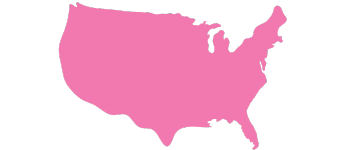Women Affecting Government
Women Affecting Government
Data highlight
Oklahoma ranks 47th out of 51 (including D.C.) for the share of voting-eligible women who voted in the November 2020 election. Washington, D.C., saw the highest percentage with 86.0% (Minnesota led the states with 78.9%). West Virginia ranked last with 56.0%.
HOW WE STACK UP
The share of women who voted in the 2020 November election and are part of the voting population (over 18, a U.S. citizen, and satisfied court-mandated requirements related to a felony).


Source: Rutgers University
YOU MIGHT ALSO LIKE
Definition
Females comprise 50.1% of Oklahoma’s population but are noticeably underrepresented in elected positions. Women’s voices and needs are invariably relayed by decision-making men, much like a game of telephone. Whether at the ballot box or on the legislative floor, adequate representation of women by women to tell women’s stories is a nonpartisan idea; it is a tenet of representative democracy.
Why we care:
Women’s effect on all levels of government is vital in advancing women’s health. Women know women’s experiences best. Interventions implemented from the local to national levels play an outsized role in addressing health outcomes and disparities.
Representation can come in various forms, including women holding office and voting in elections. Women make up a larger share of registered voters and eligible Oklahomans who vote, a trend reflected nationally.
Although voter turnout in Oklahoma increased between 2016 and 2020, the state had the lowest voter turnout in the nation, ranking 51st out of 51 (including D.C.). It is believed that part of Oklahomans’ apathy is the perceived lack of competition in races, particularly at the top of the ballot and between the two dominant political parties.
After the 2020 election, women comprised 21.5% of the Oklahoma legislature. This number reduced slightly two years later, in 2022, to 20.1%.
In recent years, there has been a notable surge in the participation of women in seeking prominent political offices. While these endeavors have not always resulted in electoral success, they undeniably mark a significant shift in societal perceptions and expectations. Recognizing the potential impact of candidates who not only mirror the diverse demographics of the population but also possess the ability to engage and inspire voters is important to improving voter turnout in these elections.
Considerations
Comparing election data can be difficult. Presidential election years yield higher voter turnouts than midterm and off-year elections (during odd-number years). Generally, reports discussing voter-related turnout focus on presidential election years or analyze the two separately. We have chosen to focus our discussion on the most recent presidential election to date, November 2020. Policy factors such as candidate excitement, incumbency, or state question content will affect voter turnout. Lesser thought-of factors, such as weather or a pandemic, can also play a role. November 2020 elections nationwide were carried out under new pressures, policies, and procedures. In Oklahoma alone, absentee ballot procedures were altered. This context must be kept in mind going forward.
What we can do
- Register and vote
- Integrate civic action and education into existing programs and services
- Partner with organizations that work to register, educate, and help voters cast their ballot
- Run for office and support organizations that uplift women running for public office
- Recruit and support women from historically underrepresented communities to run for office
This issue brief was written by Metriarch staff as part of our Data Lookbook. Contributions and peer review were provided by Representative Ajay Pittman.
Suggested citation
Metriarch. “Social Dynamics,” Data Lookbook (2024). URL: metriarchok.org/women-affecting-government.
- Last updated April 4, 2024
Share this page:





